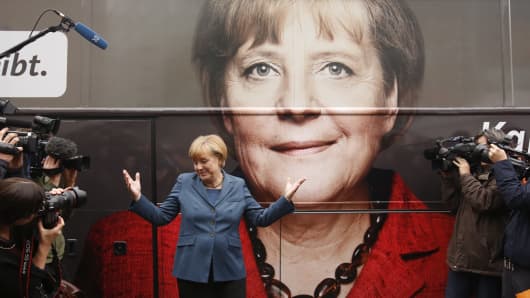This article was originally published on Medium via weforum.org.
In the United States and the United Kingdom, and even at the United Nations, there's a buzz around women in power at the moment.
Hillary Clinton is in a strong position to become the next president of the United States.
After UK Prime Minister David Cameron resigned, the short list for his successor came down to two names, both women: Theresa May and Andrea Leadsom. And, now that Leadsom has dropped out, Theresa May is expected to be the next prime minister.
With the opposition Labour Party in disarray, there is talk of current leader Jeremy Corbyn being challenged by Angela Eagle. Scotland, meanwhile, is led by First Minister Nicola Sturgeon. In fact, all three of the main political parties in Scotland are now led by women.
And with the UK's recent decision to leave the European Union, German Chancellor Angela Merkel's power has been even further enhanced.
Meanwhile, former UN Climate Chief Christiana Figueres has been nominated as a candidate to be next UN secretary-general.
It feels, for once, like women are tipping the balance when it comes to the key positions of power in politics. But their achievements haven't come out of nowhere: in fact, women have been doing well in politics in quite a few places for quite a while now.
In fact, there are now two countries in the world with more women than men in parliament: Rwanda and Bolivia.



